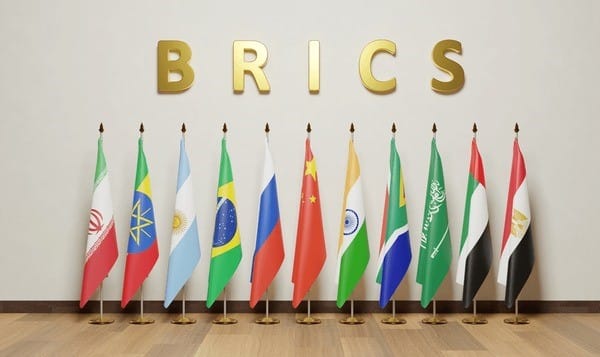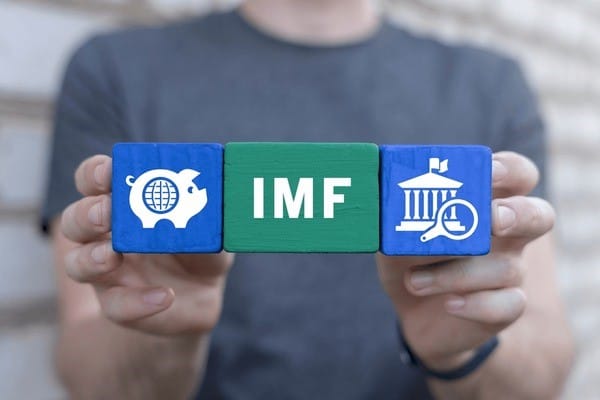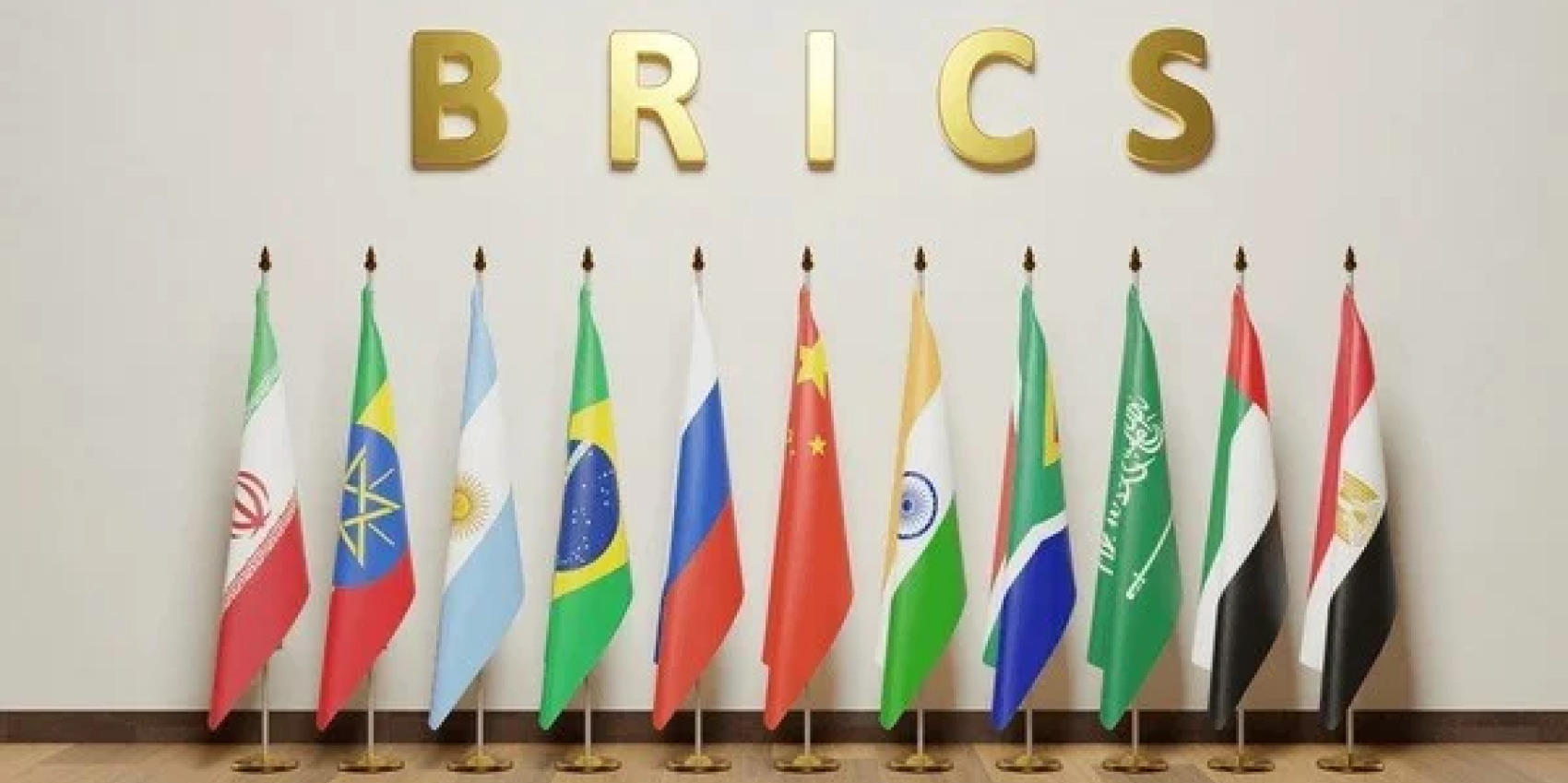
In the run up to the 16th BRICS Summit held in October 2024, 22nd to 24th in Kazan, Russia, there was a flurry of media reports suggesting that BRICS countries were mulling the creation of a BRICS currency to challenge the US dollar dominance in international trade. The excitement over the idea of a BRICS currency reminded me of an old folklore story that goes as follows. Once upon a time, rats convened a meeting to discuss strategies on how to deal with the cat that was continuously killing their number with impunity. During the discussions, one rat came up with a suggestion of tying a bell around the cat’s neck so that whenever it tries to pounce on them, the sound of the bell would alert them. The suggestion was greeted with ululation and overwhelming happiness. It was such a brilliant idea to their plight that the gathering started partying. At the height of the happiness, one thoughtful rat called for order to pose a question. This is the question it posed: “Who is going to tie the bell around the cat’s neck?” Immediately there was dead silence. There was a realization of the magnitude of the problem. Then suddenly, the cat, which probably had detected the gathering from the noise of the earlier partying, pounced on them. The rats fled for their lives in different directions. Let’s hope the idea of a BRICS currency will not turn out to be another folklore story.
The Evolution of Money: From Barter to Fiat and the Case for a BRICS Optimum Currency
Historically, the concept of a fiat currency was initiated by private people, particularly merchants and not by governments. Before the advent of fiat money or currency, trade was entirely through barter. Private traders adopted some form of money to overcome the limitations of barter trade, such as the need for a “double coincidence of wants’ between two parties, indivisibility of some goods, lack of standard for deferred payments and problems in storing wealth. The limitations of barter trade gave birth to money but did not eliminate barter trade to this day. Governments have been always slow followers in the adoption of money, and when they did, they declared sole to be issuers of it. Central bank digital currencies (CBDCs) being mooted and/or adopted by almost all central banks are clearly a response to privately created crypto currencies.
One could argue that BRICS currency concept takes its cue from the economic principle of an optimum currency area (OCA) although there is no attempt in media reports to argue for it on this basis. The idea of an optimum currency area as developed by a Canadian economist, Robert Mundell, based on earlier work by Abba Lerner, speculates that sharing a currency can benefit a geographic region by significantly increasing trade. However, this trade must outweigh the costs of each country giving up a national currency as an instrument to adjust monetary policy. Typically, such a geographic region would be characterized by an integrated labour market that allows workers to move freely throughout the area and smooth out unemployment in any single zone, price and wage flexibility (a convergence of these among the countries), similar business cycles and timing for economic data to avoid a shock in any one area, and a centralized budget or control to redistribute wealth to parts of the area which suffer due to labour and capital mobility. Let us briefly go through extant and existing OCAs before examining the potential of a BRICS optimum currency.
Perhaps, the oldest optimum currency area was the British Empire whereby colonies of Britain utilized the Pound as a medium of exchange. One could argue that theoretically it was not an OCA, but one politically enforced and justified to simplify and facilitate trade between Britain and its colonies. Similarly, another old OCA is the CFA of African French speaking countries (former colonies of France) originally based on the French franc currency and now on the Euro but still called the CFA currency area. The CFA currency area, although modelled along the same lines as the sterling currency area, is different from the latter in the sense that it is within the same geographic region in which countries share a lot of characteristics to this day, especially in terms of labour mobility which has been operationalized by the Economic Community of West African Countries (ECOWAS)’s free movement protocol. But it should be noted that not all ECOWAS countries are in the CFA currency area by virtue of being former French colonies; Ghana, The Gambia and Nigeria are examples.
Africa’s Monetary Unions: Shilling and Rand Currency Areas
Another aborted OCA in Africa was the Shilling currency area of the East African Community (EAC). Though aborted, the original members of the currency area – Kenya, Tanzania, and Uganda – still use the Shilling as their currency, although the currency of each of these countries is not convertible at par against each other. The expanded East African Community still aspires to have a common currency in the future.

The third notable OCA in Africa is the Rand Common Monetary Area in Southern Africa comprising South Africa, Lesotho, Eswatini and Namibia, where the South African Rand is a common currency. Note that Botswana was initially a member but opted out in 1976 when it adopted the Pula as its own currency. The Rand Monetary Area has been quite enduring and ideally could be a viable basis for a future Southern African Development Community (SADC) monetary union.
Euro’s Success vs BRICS’ Common Currency Challenges
Among developed countries, the well-known OCA is the Euro currency area. The Maastricht Treaty signed on December 1, 1991, in the Netherlands paved the way for a single currency for Europe. Following a decade of preparation, the Euro was launched on January 1, 1999. The Euro was meant to promote economic integration, facilitate trade, and provide a stable currency for member states and has since become one of the most widely used currencies globally along with the dollar, the pound, the yen, and the renminbi. Whilst the Euro has endured over time, it has faced challenges such economic disparities among member states and arguments over fiscal policies.
The question is whether the BRICS countries satisfy the requirements for an OCA to adopt a single currency. The term “BRIC” was coined by Jim O’Neill when he was an economist for Goldman Sachs in 2001 to describe a group of fast-growing emerging economies of Brazil, Russia, India, and China. When South Africa joined in 2010 the acronym was changed to BRICS. Egypt, Ethiopia, Iran, and the UAE were officially admitted to BRICS during the summit held in Johannesburg, South Africa, on August 24, 2023.This grouping of countries formalized themselves with the aim to foster cooperation in various areas, such as trade, finance, and development as well political and security issues. Their notable achievement so far is the establishment of the New Development Bank in 2014 to provide financial assistance for infrastructure and development projects to member countries. Recently, there have been reports that the grouping is considering having a common BRICS currency to rival the dominant US dollar. Having a common currency makes one question whether BRICS countries have the ingredients of an OCA, namely, labour mobility among countries, price and wage flexibility (a convergence of these among the countries), similar business cycles, and fiscal integration among countries.
Firstly, regarding labour mobility, the BRICS comprise mostly heterogenous countries in different regions that do not have mobility in any significant way, if we examine migration trends among them. Almost all BRICS countries have different official languages save for only two countries – India and South Africa – that share the same official language, English.
Secondly, regarding price and wage flexibility, there is no evidence that BRICS countries share anything on his issue, and neither has a debate been opened to explore the potential of having convergence on the matter as was done in the early years of the European Union monetary integration.
Thirdly, BRICS countries cannot be considered as a grouping with similar business cycles. The only discernible similar aspect is that as members of emerging economies, their currencies tend to move in sync against the US dollar in response to global economic cycles.
Fourthly, there is no evidence that BRICS countries intend to integrate their fiscal and monetary policies as is required in a currency union. During the conceptualization of the Euro, this aspect was a thorny issue and has not been comprehensively resolved to date. Being heterogenous as salt and sugar, it will be a miracle for BRICS countries to achieve just a semblance of integrated fiscal and monetary policies.
Why BRICS Countries Should Prioritize Economic Union Over a Common Currency
In essence, BRICS countries are so far away from being an OCA that the debate of a BRICS currency is simply a bar talk-shop. Apparently, the idea of the BRICS currency is being confused with de-dollarization and conducting bilateral trade with another currency other than the US dollar. A grouping of countries can have a common currency but still conducts trade in the US dollar. That is what is happening to some extent with those countries belonging to existing currency unions. The choice of the US dollar is a rational decision that makes business sense because its value is not as volatile as emerging currencies. However, this does not prevent a government from agreeing with another government to conduct trade in their national currencies. It happens often by agreement, especially by countries like Iran and Russia that are under US economic sanctions. On the other hand, governments cannot prescribe the choice of a trading currency by private agents or business, as these make their decisions based on enhancing the value of their exported goods between the time the goods are sold, and the time payment is made.
Rather than BRICS countries preoccupying themselves with debates over a too distant and probably utopian BRICS currency, they are advised to focus on laying the foundation for an economic and monetary union. It took Europe nearly sixty years to do so as it involved coordinating economic and fiscal policies and having a common monetary policy leading to a common currency. There is no evidence that the BRICS countries have started such a process. There is also a need for a role model in the countries seeking a currency union. For instance, the Euro was anchored on the credibility of the German central bank – the Deutsche Bundesbank – whereas the Rand Monetary Area was anchored on the credibility of the South African Reserve Bank. In this regard, central banks of BRICS countries should be reformed so that they are truly independent to conduct monetary policy without political interference, in addition to coordinating economic and fiscal policies. These are issues they should be discussing in their annual summits if they want to dream about having a common currency.
Otherwise for now the noise about a BRICS currency is simply a distant pipe dream. The US dollar reserve currency status is still as safe today as it has been over the past decades. Its marginal decline over the years is attributed to countries preferring currency diversification in reserve holdings rather than doubting its reserve status. According to the IMF’s Currency Composition of Foreign Exchange Reserves (COFER) data, in the fourth quarter of 2022 the US dollar accounted for 58.36% of global foreign reserves, the Euro coming second at about 20.5% and the Chinese Yuan a distant third at just 2.7% of global foreign reserves[1]. China, which is regarded as the torchbearer of BRICS has a currency whose value is not entirely determined by demand and supply and has capital controls that limit mobility of capital. Given these macroeconomic issues, the road to an economic and monetary union for the BRICS countries will be a sore-foot journey.

Key Learnings for Decision-Makers
-
- Challenges of Implementing a BRICS Currency:
- The BRICS countries lack key prerequisites for an optimum currency area (OCA), such as labor mobility, price and wage flexibility, aligned business cycles, and fiscal policy integration.
-
- Unlike the Euro, which took decades of groundwork, BRICS countries are far from initiating the structural foundations for economic and monetary union.
- Challenges of Implementing a BRICS Currency:
-
- Economic Realities vs. Aspirational Goals:
- The concept of a BRICS currency is often mistaken for efforts to de-dollarize international trade. However, replacing the US dollar as the global reserve currency remains impractical due to its stability and widespread acceptance.
-
- China, seen as the BRICS leader, faces challenges such as controlled capital mobility and limited currency value flexibility, adding to the obstacles for a unified currency.
- Economic Realities vs. Aspirational Goals:
-
- Historical Insights on Currency Unions:
- Successful currency unions, such as the Eurozone and the Rand Monetary Area, required decades of coordinated fiscal and monetary policies alongside a strong anchor economy or institution.
-
- Any discussion of a BRICS currency must begin with the establishment of independent central banks and credible fiscal frameworks.
- Historical Insights on Currency Unions:
-
- Practical Steps for BRICS Progress:
- Focus should shift from speculative debates to building foundational elements like economic coordination and a model for fiscal convergence.
-
- Without these steps, discussions of a BRICS currency remain speculative and premature.
- Practical Steps for BRICS Progress:
Take the Next Step
Stay informed with expert analyses, in-depth opinion pieces, and actionable insights on global economic trends and market strategies. Join GB2B today—your go-to resource for decision-making in the business and finance ecosystem.
Subscribe now to gain access to exclusive content designed to empower leaders like you!
About the Author:
* Daniel Makina is Emeritus Professor of Finance at the University of South Africa
See [1] https://www.imf.org/en/Data
Acknowledgement: A variant of this article by this author first appeared on August 28, 2023, in the South African Financial Markets Journal: https://financialmarketsjournal.co.za/the-brics-currency-brouhaha-could-be-just-a-pipe-dream/



























